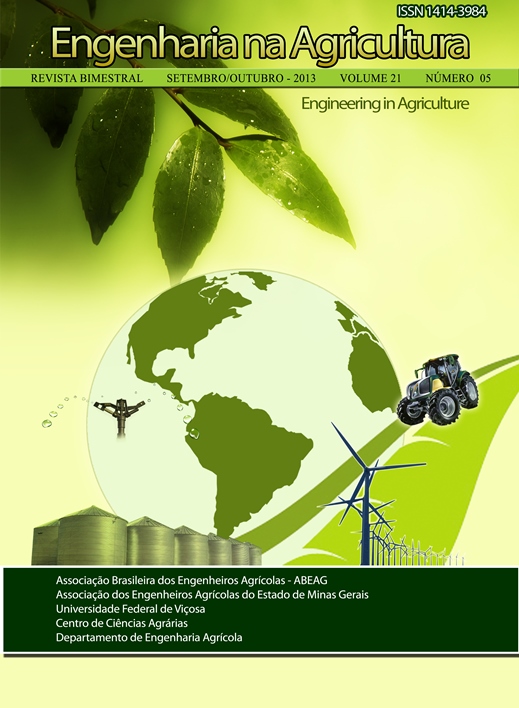ASSESSMENT OF AERATED STATIC PILES IN THE COMPOSTING OF POULTRY CARCASSES
DOI:
https://doi.org/10.13083/reveng.v21i5.387Keywords:
higienização, leiras estáticas aeradas, degradação bioquímica.Abstract
This study aimed to evaluate the efficiency of the composting process in aerated static piles with positive aeration for the treatment of poultry carcasses, using cane sugar bagasse, coffee straw and poultry litter as bulking materials and carbono sources. Efficiency indicators used were based on stabilization of organic matter (reduced VS, the C/N ratio and CEC/ TOC) and sanitization (reduction of microorganisms, coliforms and Salmonella). Different treatments were evaluated and compared with regards to efficiency of sanitization of compost and organic matter stabilization, using aerated static piles. The following treatments (T) were utilized: T1 - sugar cane bagasse, poultry litter and poultry carcasses; T2 – sugar cane bagasse, poultry litter and ground poultry carcasses; T3 - coffee straw, poultry litter and ground poultry carcasses. The variables monitored were temperature, C/N ratio, volatile solids (VS), pH, CEC and water content. The data also showed the evolution of the CEC/TOC index ? 1.7, the elimination of Salmonella and fecal coliform reduction. At the end of the experiment it was found that the coffee straw provided better results in composting of poultry carcass that sugar cane bagasse, since it resulted in greater reduction in the values of VS. Moreover, the material produced in the first composting phase (active phase), showed CEC/TOC index values higher than those considered suitable (1.7) for compost considered matured. As for sanitization, the Salmonella and fecal coliform microorganisms’ reduction reached levels were consistent with those defined in the legislation CONAMA 375/2006.Downloads
Downloads
Published
How to Cite
Issue
Section
License
Authors who publish with this journal agree to the following terms:
The author(s) authorize(s) the publication of the text in the journal;
The author(s) ensure(s) that the contribution is original and unpublished and that it is not in the process of evaluation by another journal;
The journal is not responsible for the views, ideas and concepts presented in articles, and these are the sole responsibility of the author(s);
The publishers reserve the right to make textual adjustments and adapt texts to meet with publication standards.
From submission, the author is fully conceding the paper's patrimonial rights to the publication, but retaining the owner of its moral rights (authorship and paper's identification) according to Creative Commons Attribution-Noncommercial.








 Licensed by
Licensed by 